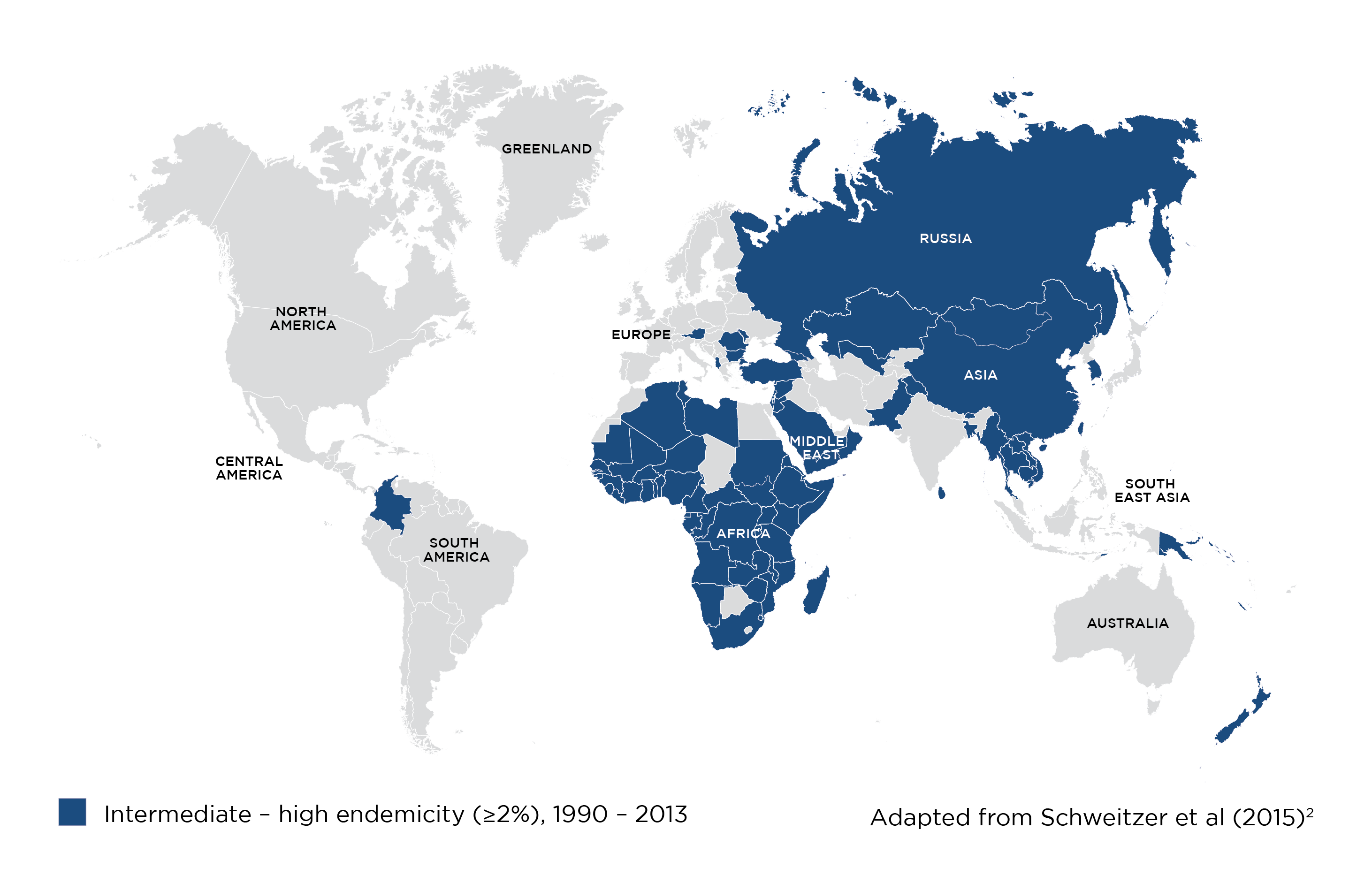Around 296 million people are affected by chronic hepatitis B, an infection that is the leading cause of liver cancer globally.1,3
Risk areas for Hepatitis B

FAQs
-
Key fact
-
How do you get hepatitis B?
Hepatitis B is spread in blood and body fluids. It can be caught through unprotected sex with someone infected with the virus, or by exposure to contaminated blood through the reuse of needles or syringes (for example, while injecting drugs or during medical procedures). It can also be transmitted by body piercings or tattoos using unsterilised equipment.1
-
Which countries are affected by hepatitis B?
Hepatitis B is found in most countries, but the risk is higher in Africa, eastern Europe and Asia (see map).2
-
What are the symptoms of hepatitis B?
Most people do not experience symptoms. But for those who do, the symptoms include: yellowing of the eyes and skin (jaundice), dark urine, extreme fatigue, nausea, vomiting and pain in the abdomen.1 The infection usually lasts for 1-3 months. If the infection lasts for longer than 6 months, it is considered chronic hepatitis B.4
-
How serious is the hepatitis B?
Hepatitis B is a serious disease. Though the initial symptoms generally pass within months, the virus can cause long-term and potentially fatal liver damage. It can also lead to the development of cirrhosis (a scarring of the liver) or liver cancer. Treatment can reduce this risk.1,4
-
Can I prevent getting hepatitis B?
You can take the following precautions to help reduce your risk of infection:
- Visit your nearest convenient pharmacy or specialist travel health clinic for a risk assessment before your trip
- Don’t have unprotected sex (e.g. use condoms)5
- Avoid sharing or using unsterilised needles5
- Be cautious about body piercing and tattooing, making sure sterile needles are used5
Ready to get started? Check now for your nearest travel health clinic.
Get friendly advice from the UK's largest network of travel clinics*.
* This list is not exhaustive and other travel health providers are available.
References
- World Health Organization. Factsheet. Hepatitis B. April 2024. Available online: https://www.who.int/en/news-room/fact-sheets/detail/hepatitis-b (Last accessed May 2025)
- Schweizer A, Horn J, Mikolajxzyk RT, et al. Estimations of worldwide prevalence of chronic hepatitis B virus infection: a systematic review of data published between 1965 and 2013. Lancet. 2015;386(10003):1546-55.
- Centers for Disease Control and Prevention. Global Hepatitis B Vaccination. Fast Facts: Global Hepatitis B Vaccination. July 2024. Available online: https://www.cdc.gov/global-hepatitis-b-vaccination/data-research/index.html (Last accessed May 2025)
- NHS. Conditions A to Z. Hepatitis B. July 2022. Available online: https://www.nhs.uk/conditions/hepatitis-b/ (Last accessed May 2025)
- The Mayo Clinic. Disease & Conditions. Hepatitis B. October 2024. Available online: https://www.mayoclinic.org/diseases-conditions/hepatitis-b/symptoms-causes/syc-20366802 (Last accessed May 2025)
UK-BOTB-2500029 May 2025
